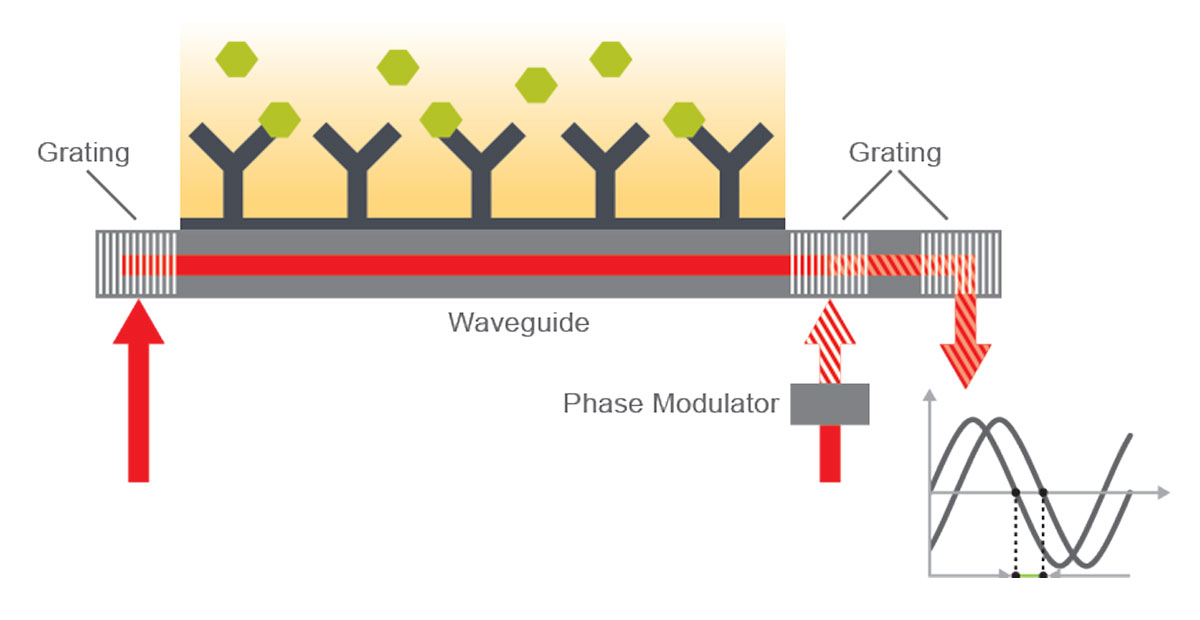Grating-Coupled Interferometry
Grating-Coupled Interferometry (GCI) is a method based on waveguide interferometry to monitor and characterize molecular interactions and to determine kinetic rates, affinity constants and concentrations of the interacting analytes.
Waveguide Interferometry like other optical label-free methods, such as Surface Plasmon Resonance (SPR), detect refractive index changes within an evanescent field near a sensor surface due to changes in mass by complex formation of the interacting molecules.
In contrast to SPR where the surface plasmon is quickly attenuated by the metal film, the light in waveguide interferometry can travel over the entire interaction length. Hence, more binding events contribute to the signal and an intrinsically higher primary sensitivity is achieved making waveguide interferometry the most sensitive optical principle for label-free interaction analysis. Furthermore, the evanescent field penetrates less deep into the sample and less disturbance by bulk refractive index changes is experienced.
In a classical waveguide interferometer however, the perfect alignment of measurement and reference beam is challenging and sensitive to environmental effects such as temperature shifts or mechanical distortions or vibrations. With its proprietary Grating-Coupled Interferometry (GCI) Creoptix provides a solution to eliminate the alignment issues known from classical waveguide set-ups and offers the first robust implementation of waveguide interferometry.

GCI - Suppliers
Creoptix AG
Creoptix AG
Zugerstrasse 76
8820 Waedenswil
Switzerland
phone: +41 44 533 26 61
website: www.creoptix.com
